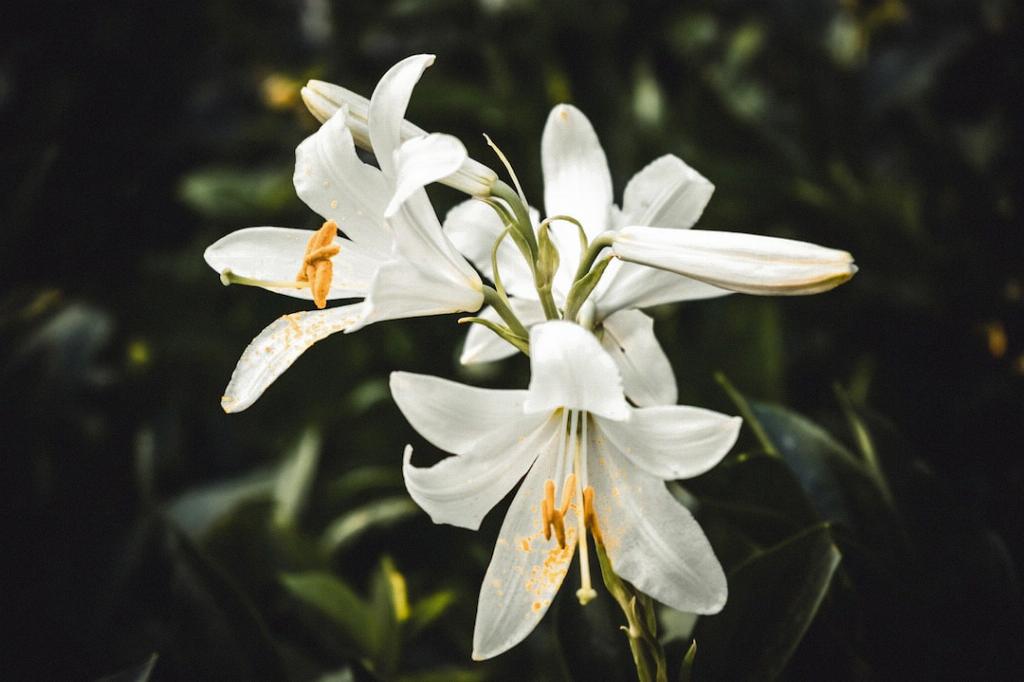Planting lilies is a wonderful way to add beauty and elegance to your garden. These stunning flowers prefer to have their blooms exposed to sunlight while keeping their roots in the shade. When planning your garden layout, consider planting lilies among other annuals or perennials that provide shade for their roots, ensuring they thrive in the right environment.
Before planting your lilies, it’s essential to prepare the soil properly. Lilies prefer well-draining soil, so ensure the area where you plan to plant them has good drainage. You can improve soil drainage by adding organic matter such as compost or peat moss to the soil.
When it comes to the actual planting process, remember to position the lily bulbs correctly. Plant the bulbs with their roots facing downward and the scales pointing upward. Ideally, the tops of the bulbs should be placed 4-6 inches below the soil surface. This depth allows the bulbs to establish themselves while ensuring the blooms receive enough sunlight.
When planting your lilies, spacing is crucial. It’s recommended to space lily bulbs at least 8-12 inches apart to give them enough room to grow and flourish. Proper spacing not only ensures optimal growth but also prevents overcrowding, which can lead to disease or stunted growth.
After planting your lilies, consider adding a layer of mulch around the bulbs. Mulch helps retain soil moisture, regulate soil temperature, and prevent weed growth. Organic mulches such as straw or shredded bark are excellent choices for lilies as they break down over time, enriching the soil with nutrients.
Watering is a critical aspect of caring for newly planted lilies. Keep the soil consistently moist but not waterlogged to encourage healthy root development. Water your lilies deeply once a week, especially during dry spells, ensuring the water reaches the root zone.
As your lilies grow, it’s essential to provide them with adequate nutrition. Fertilize your lilies in early spring before new growth appears and again in midsummer to support blooming. Use a balanced fertilizer specifically formulated for flowering plants to promote healthy growth and vibrant blooms.
When it comes to maintenance, deadheading spent blooms is essential to encourage continuous flowering. Remove faded flowers promptly to channel the plant’s energy into producing more blooms. Additionally, remove any yellowing or damaged leaves to promote overall plant health.
Pest and disease management is another crucial aspect of caring for lilies. Keep an eye out for common pests such as aphids, thrips, and lily beetles, and take appropriate measures to control infestations. Regular inspection and early intervention can help prevent pest damage and ensure your lilies remain healthy.
Proper winter care is essential to protect lily bulbs from frost damage. In regions where winters are harsh, consider mulching your lilies with a thick layer of organic mulch to insulate the bulbs and protect them from freezing temperatures. Additionally, avoid cutting back foliage until it has yellowed and withered completely.
By following these guidelines and providing the proper care, you can enjoy a vibrant display of lilies in your garden season after season. Whether you’re a novice gardener or a seasoned pro, planting lilies is a rewarding experience that brings joy and beauty to any outdoor space. With the right care and attention, your lilies will thrive and delight you with their stunning blooms.

